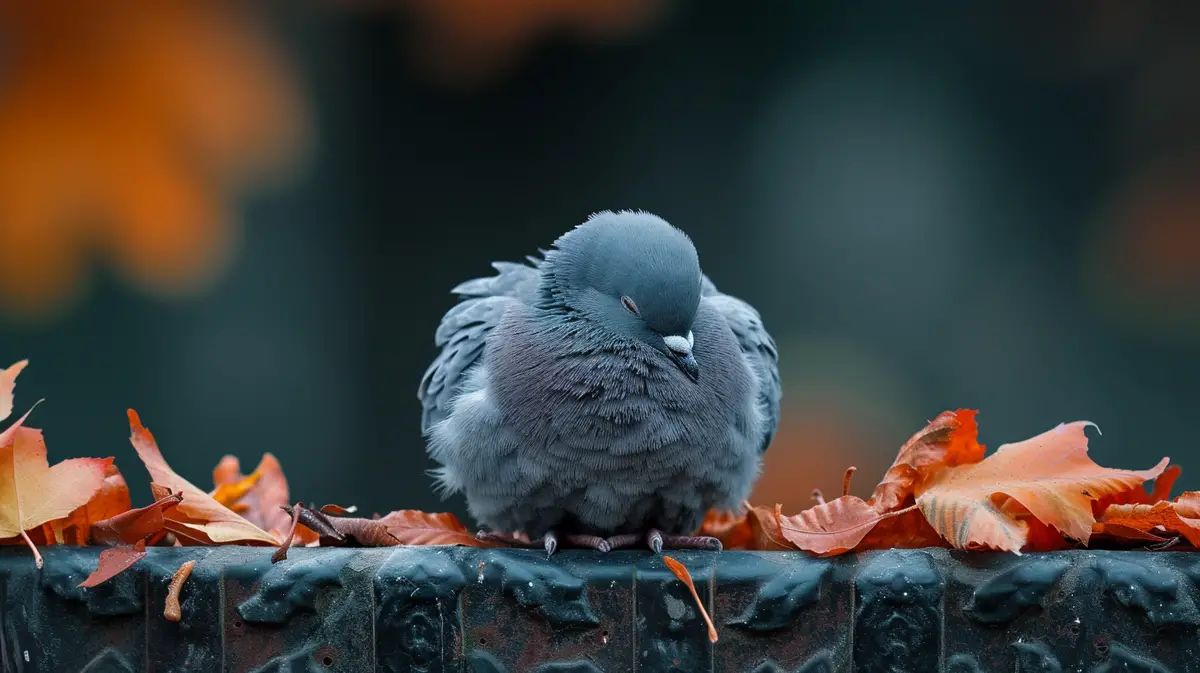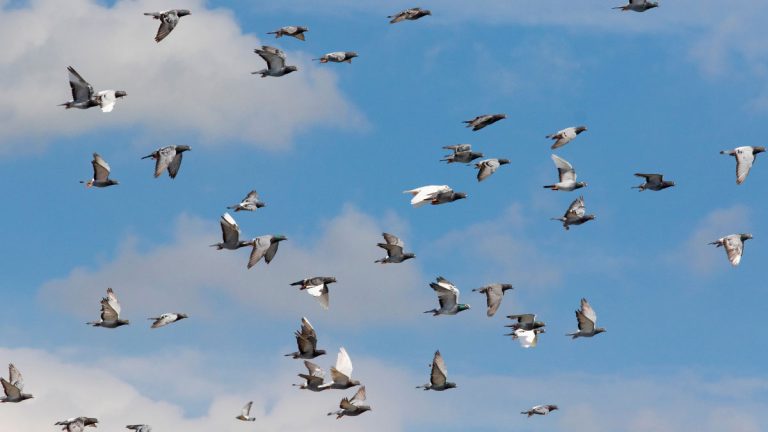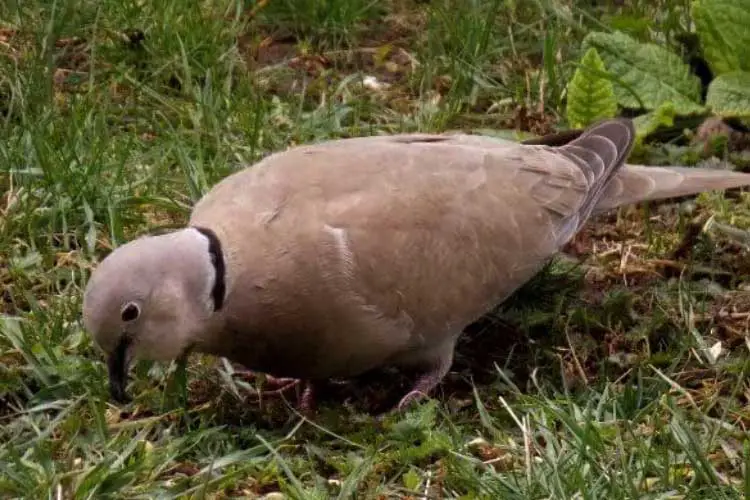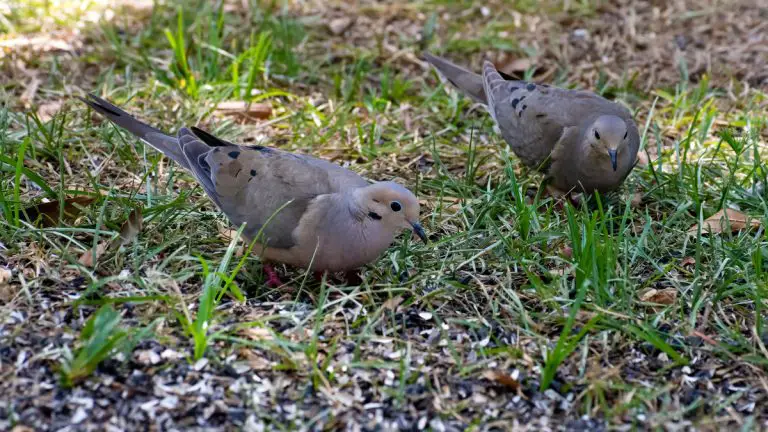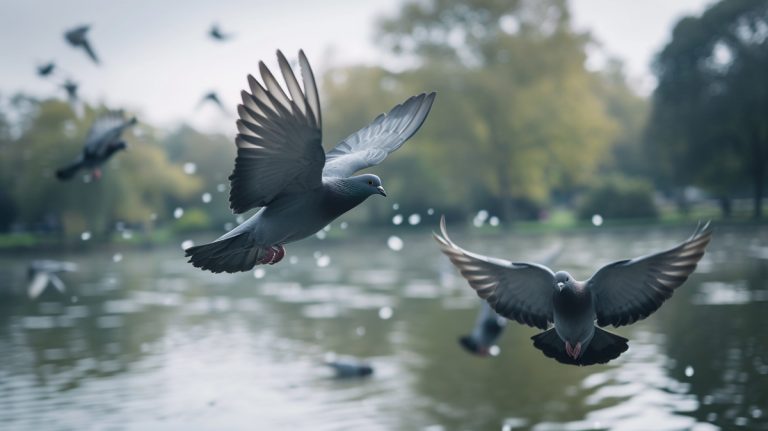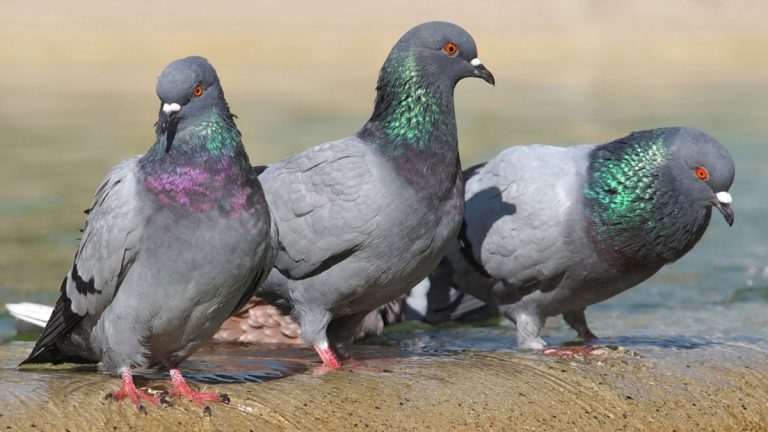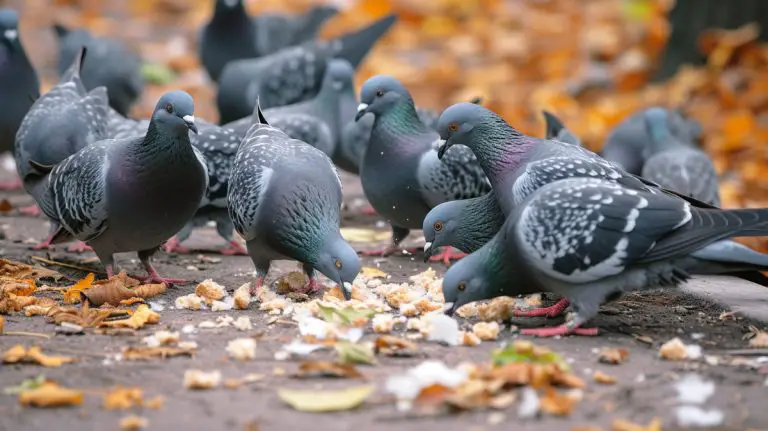How Do Pigeons Sleep: Unveiling Their Unique Sleeping Habits
Have you ever wondered how pigeons sleep? These fascinating birds have a unique way of catching some shut-eye that sets them apart from other animals. In this article, I’ll delve into the intriguing world of pigeon sleep and uncover the secrets behind their restful nights.
When it comes to finding a cozy spot to sleep, pigeons are quite resourceful. Unlike humans who retreat to their beds, pigeons can sleep almost anywhere. From perched on tree branches to nestled in the nooks and crannies of buildings, these adaptable creatures make the most of their surroundings. But what exactly happens when pigeons doze off? Let’s explore the different sleeping positions and habits that pigeons exhibit.
While you may think that pigeons sleep like most birds, with their heads tucked under their wings, you’ll be surprised to learn that this is not the case. Pigeons have a unique way of sleeping that allows them to keep an eye out for potential predators. They sleep with one eye open, quite literally! This remarkable adaptation ensures that they can stay alert and ready to take flight at a moment’s notice. So, the next time you spot a pigeon perched on a ledge, remember that it’s not just resting, but also keeping a watchful eye on its surroundings.
What Makes Pigeons’ Sleeping Habits Unique
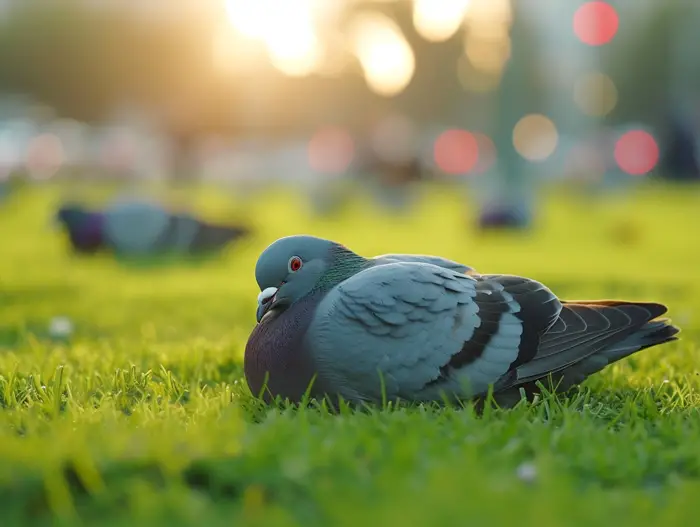
When it comes to sleeping habits, pigeons are quite unique compared to other birds. Let me explain why their sleeping habits are so fascinating:
- Sleeping Anywhere, Anytime: Unlike humans who retreat to their beds, pigeons can sleep almost anywhere. Whether it’s perched on a branch, standing on one leg, or even on the ground, pigeons make the most of their surroundings to catch a few z’s.
- No Tucked Heads: Contrary to popular belief, pigeons do not sleep with their heads tucked under their wings like most birds. Instead, they sleep with one eye open! This behavior allows them to stay alert and ready to take flight at any moment.
- Remaining Vigilant: Pigeons’ ability to sleep with one eye open is a remarkable adaptation that helps them keep an eye out for potential predators. It’s almost like they have a built-in alarm system, ensuring their safety even while they rest.
- Quick Naps: Pigeons are known for taking quick power naps, as short as a few seconds or minutes. These short bursts of sleep allow them to recharge and stay active throughout the day.
- Flexibility: Pigeons have a unique ability to go into different sleep states, allowing them to adapt to different environments and situations. Whether it’s perched high on a ledge or nestled in a cozy nest, pigeons know how to find the perfect spot for a snooze.
Adaptable Sleeping Spots of Pigeons
Pigeons are truly remarkable creatures when it comes to finding a place to rest their weary wings. Let’s explore the unique and adaptable sleeping spots of these fascinating birds.
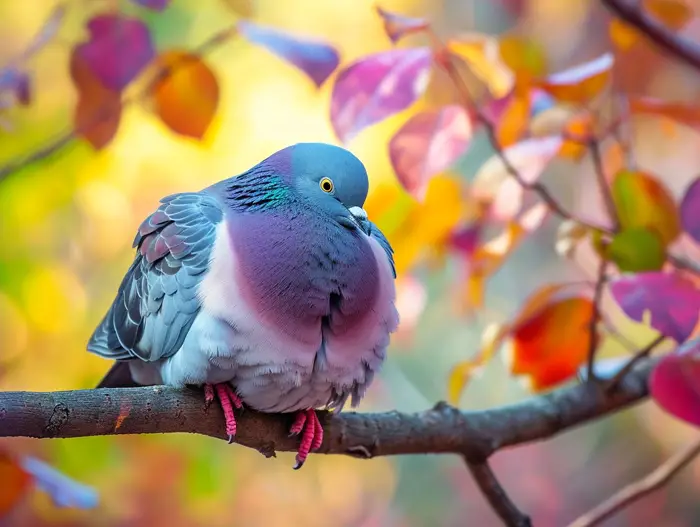
Rooftops and Ledges
One of the most common places where you’ll find pigeons seeking shelter is rooftops and ledges. Whether it’s the roof of a tall building or a simple ledge on a window sill, pigeons utilize these elevated perches to get some well-deserved rest. With their keen sense of balance, pigeons can comfortably sleep in even the most precarious places.
Trees and Branches
While many birds choose trees and branches as their primary resting spots, pigeons make use of them as well. These adaptable birds can roost in trees, finding branches to balance on and nuzzle into a cozy spot for the night. This is an excellent way for pigeons to stay hidden from predators and enjoy a peaceful sleep surrounded by nature.
Nooks and Crannies
Pigeons are expert at finding hidden nooks and crannies to catch a few winks. Whether it’s a crevice in a building, a hole in a tree trunk, or a gap between rocks, pigeons have an exceptional ability to squeeze into tight spaces for a quick nap. This adaptability allows them to sleep in more protected areas, sheltered from the elements and potential threats.
Urban Infrastructure
Pigeons have mastered the art of adapting to urban environments, including finding innovative sleeping spots in human-made structures. From the nooks and crannies in bridges and tunnels to the crevices between buildings, these resourceful birds can turn any corner into a cozy haven for their power naps.
Pigeons truly have a knack for finding adaptable sleeping spots. Whether it’s rooftops, trees, hidden nooks, or urban infrastructure, these birds make the most of their surroundings. Their ability to sleep in different locations allows them to stay alert and prepared for any challenges that may come their way. Next time you see a pigeon, take a moment to appreciate their incredible adaptability in finding the perfect place to rest.
The Truth About Pigeons Sleeping Positions
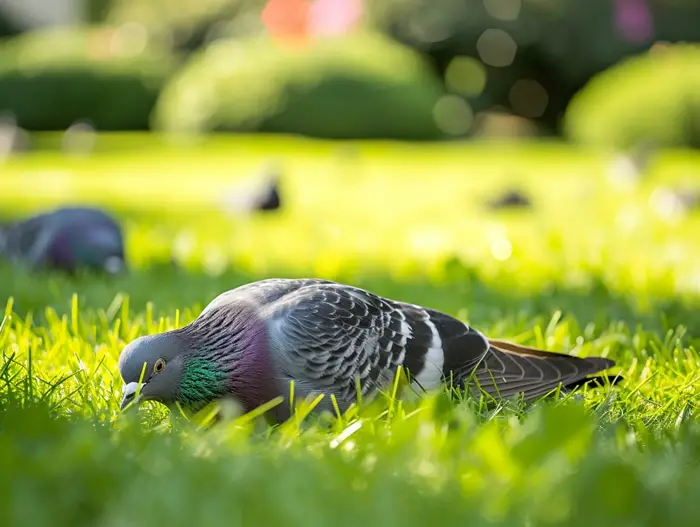
When it comes to sleeping, pigeons have some unique and fascinating positions that they can assume. As an expert blogger with extensive knowledge on these feathered creatures, I’m excited to share the truth about pigeons’ sleeping positions.
One of the most common places you might find a pigeon sleeping is on a rooftop or ledge. Pigeons have a remarkable sense of balance, allowing them to relax and catch some shut-eye even in precarious locations. It’s truly a sight to see them perched high above, peacefully snoozing away.
But pigeons aren’t limited to rooftops alone. These adaptable birds can find hidden nooks and crannies in urban settings to rest and rejuvenate. From the crevices in buildings to the recesses of trees, pigeons have an uncanny ability to locate these protected areas and make them their temporary bedroom.
It’s quite fascinating how pigeons can sleep in various spots, giving them the advantage of staying alert and prepared for any challenges that might come their way. Their adaptability and versatility in finding different sleeping positions is truly impressive.
So next time you come across a pigeon, take a moment to appreciate their unique sleeping habits. From rooftops to hidden nooks, these birds know how to find a comfortable spot to catch some much-needed rest.
Remember, pigeons are resourceful and resilient creatures, and their sleeping positions are just another example of their amazing adaptability.
Pigeons: Sleeping with One Eye Open
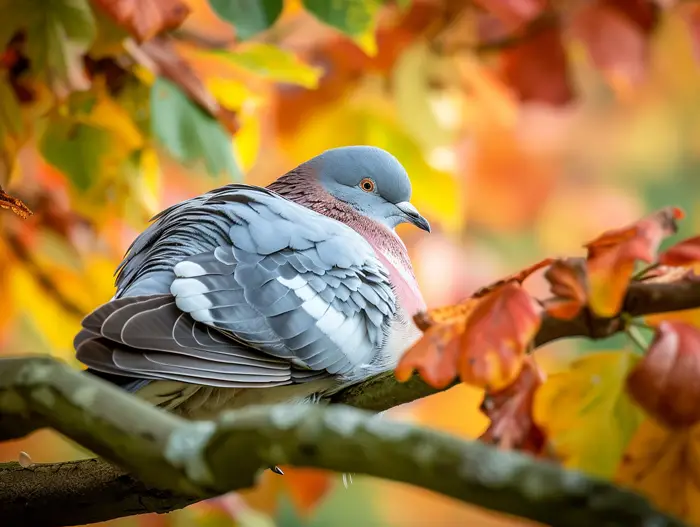
When it comes to sleep, pigeons have a unique ability that sets them apart from many other birds. They can sleep with one eye open! Yes, you heard that right. Pigeons have the remarkable ability to keep one eye open while they rest, allowing them to stay alert and keep an eye out for any potential danger.
This fascinating behavior is known as unilateral eye closure, and it’s a survival instinct that pigeons have developed over time. By keeping one eye open, pigeons can quickly detect any predators or threats in their surroundings, even while they are sleeping. It’s like having a built-in alarm system!
But how do pigeons manage to sleep with only one eye closed? Well, it’s all thanks to their unique eye structure. Unlike humans and many other animals, pigeons have eyes that are positioned on the sides of their heads, giving them a wide field of vision. This allows them to keep one eye open while the other one rests, ensuring that they are always on guard.
Not only do pigeons sleep with one eye open, but they also have the ability to switch eyes. This means that they can alternate which eye is open and which one is closed, giving each eye a chance to rest. It’s like taking turns!
This remarkable adaptation is crucial for pigeons, especially when they sleep in urban environments where they are exposed to various potential dangers. Whether they are perched on a rooftop or nestled in a hidden nook, pigeons are always ready to react to any threats that may come their way.
So, next time you see a pigeon peacefully resting, remember that it’s not just a regular nap. Pigeons are masters of sleeping with one eye open, keeping themselves safe and prepared even in their moments of rest. So, the next time you catch a glimpse of a pigeon on the street, take a moment to appreciate their unique survival skills.
Delving Deeper: More Interesting Facts About Pigeon Sleep
Now that we’ve covered the basics of how pigeons sleep, let’s delve deeper into some fascinating facts about their sleeping habits. It’s truly remarkable how these birds have adapted to survive in various environments.
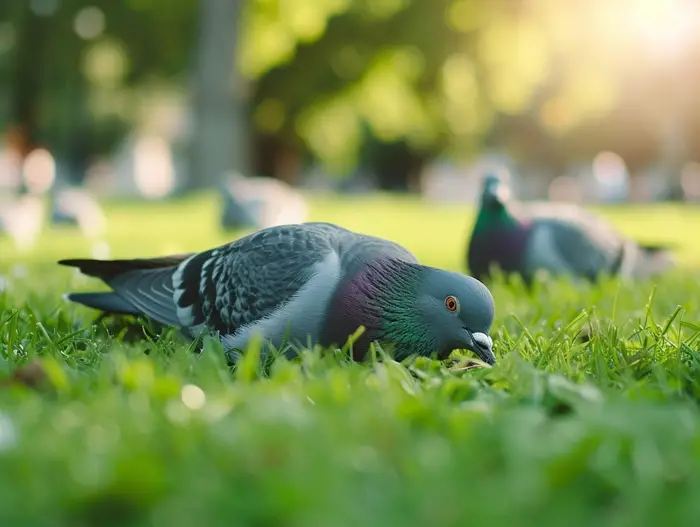
Pigeons Can Sleep with One Eye Open
One of the most unique aspects of pigeon sleep is their ability to keep one eye open while the other rests. This behavior allows them to stay vigilant and detect any potential danger while they sleep. Pigeons have a special eye structure that enables them to do this, making them more adaptable and aware of their surroundings.
They Can Switch Eyes
Not only can pigeons sleep with one eye open, but they can also switch eyes. This means that each eye gets an opportunity to rest while the other remains alert. It’s like having a built-in alarm system that ensures they’re always on guard, even when catching some much-needed shut-eye.
Sleeping Spots Are Variable and Varied
Pigeons are highly adaptable when it comes to finding comfortable sleeping spots. They can be found perched on rooftops, ledges, trees, and even hidden nooks. Their ability to make use of urban infrastructure, such as bridges and buildings, as sleeping spots is truly impressive. It just goes to show how adaptable and resourceful these birds can be.
Varied and Unconventional Sleeping Positions
Not only are pigeon sleeping spots diverse, but their sleeping positions are also quite varied. Sometimes you might spot them perched on one leg, with their fluffy feathers puffed up for warmth. Other times, they might tuck their beaks under a wing or even rest their heads on their backs. These unique sleeping positions add to the charm and curiosity of these feathered creatures.
Pigeons have remarkable sleeping habits that enable them to survive in different environments. Their ability to sleep with one eye open and switch eyes ensures that they remain alert to potential dangers. Their adaptable natures allow them to find comfortable sleeping spots in various settings. So next time you spot a pigeon resting, take a moment to appreciate their unique sleeping skills.
Conclusion
Pigeons are truly remarkable creatures when it comes to their sleeping habits. From rooftops to hidden nooks, they have a knack for finding unique and adaptable sleeping spots. But what sets them apart is their ability to sleep with one eye open.
This survival instinct allows them to stay alert and detect any potential danger. Their unique eye structure enables them to keep one eye open while the other one rests, and they can even switch eyes, giving each eye a chance to rest. It’s a fascinating adaptation that helps them thrive in various environments.
In addition to their vigilant sleeping habits, pigeons also exhibit unconventional sleeping positions. Whether it’s perching on one leg or tucking their beaks under a wing, they have mastered the art of finding comfort in the most unexpected ways.
So, the next time you spot a pigeon snoozing in a peculiar position, take a moment to appreciate their adaptability and resilience. These seemingly ordinary birds have extraordinary sleeping habits that contribute to their survival in the ever-changing urban landscape.
